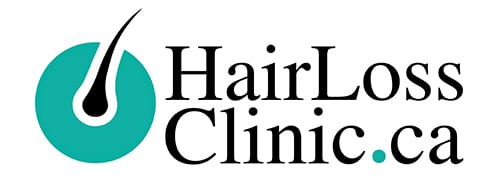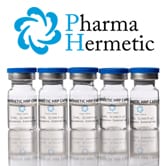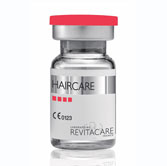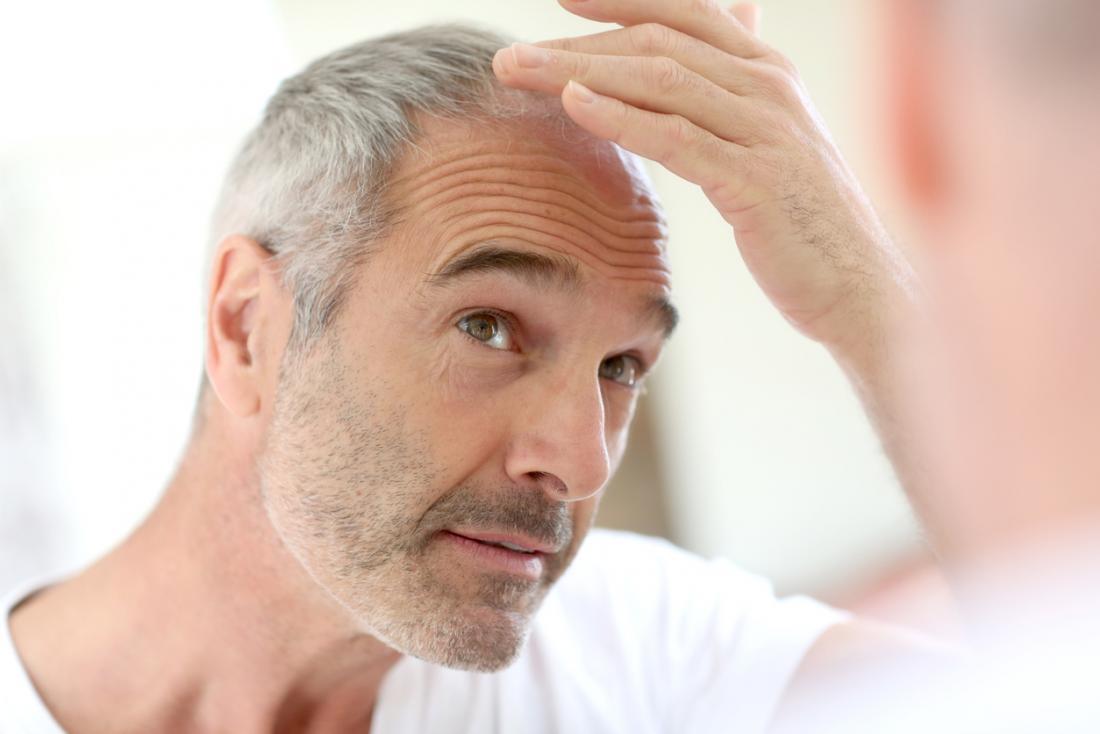Table of Contents
Male Pattern Baldness and Recommended Treatment
Male pattern baldness refers to a type of loss of hair on the scalp in men. It happens as hormone levels change over a man’s lifetime, and especially in the later years.
It is thought to affect 50 million men in the United States, and half of all men by the age of 50 years.
Although a natural part of the aging process for millions of men, hair loss can be psychologically distressing.
Sudden or unexpected hair loss can sometimes indicate a more serious health condition that may need medical attention.
Key Facts on Male Pattern Baldness
Here are some key points about male pattern baldness:
Male pattern baldness, or androgenetic alopecia, typically occurs later in life because of changing hormone levels. But it can start as early as a person’s teens.
Hair loss can be psychologically distressing for men, and they may seek a variety of treatments.
Other causes of hair loss include nutritional deficiencies, infections, and some psychological conditions.
Treatments include medications, stem cell therapy (AAPE), platelet-rich plasma (PRP), laser therapy, scalp micropigmentation (SMP), and hair transplantation.
Causes for Male Pattern Baldness
According to Genetics Home Reference, male pattern baldness has been linked to prostate cancer, diabetes, obesity and high blood pressure, or hypertension.
It can occur as a reaction to stress or after an illness or major surgery, or as a side effect of some medications, such as anticoagulants, or blood thinners, and vitamin A supplements.
Hair loss can also indicate a health condition, such as lupus, a fungal infection, or a thyroid problem.
Other possible causes include:
• Iron deficiency
• Excess vitamin A, possibly as a result of retinoid drugs
• Severe chronic illness, such as diabetes or lupus
• Malnutrition
• Use of anticoagulants, or blood thinners
• Telogen effluvium, a disturbance of the hair growth cycle
The main cause of male pattern baldness is believed to be due to a combination of genetics and the male hormone dihydrotestosterone. Genetic Hair Loss is initiated by the action of androgens (mainly dihydrotestosterone/DHT) upon the genetically predisposed hair follicle.
A number of genetic changes have been linked to male pattern baldness, but only one has been confirmed by research, the androgen receptor (AR) gene.
Other research has suggested that an abnormal quantity of a protein called prostaglandin D2 in the scalps of some men could link to hair loss.
Anyone who is concerned that hair loss may be a symptom of a health problem should see a trichologist.
Prescription and Non-Prescription Solutions for Male Pattern Baldness
Many men see hair loss as a natural part of growing older, and they do not perceive the need for treatment.
However, hair loss can trigger negative psychological effects, such as low self-esteem. In some, it can contribute to depression.
There are many treatments available today that can help to stop the hair loss and stimulate hair regrowth for androgenetic hair loss.
Prescription Solutions
The U.S. Food and Drug Administration (FDA) has approved two types of drug treatment for male pattern baldness.
Minoxidil
Minoxidil, or Rogaine, is a topical treatment applied to the scalp. It is available over the counter (OTC) at pharmacies, usually as a lotion or foam. It is reported to work best on the crown of the head.
Treatment for male pattern baldness is available, but a full reversal is not yet possible.
Minoxidil was originally tested to treat blood pressure, but some people noticed additional hair growth as a side effect while using it. It is unclear exactly how it helps prevent hair loss.
It may take 3 to 6 months for results to appear, and the medication must be used indefinitely to preserve effects.
Adverse effects include skin problems, such as itching and irritation, hives, swelling, sensitivity, and contact dermatitis.
More rarely, the user may experience blurred vision, chest pain, a fast or irregular heartbeat, flushing, headache, lightheadedness, and numbness or tingling in the face or the extremities. Rapid weight gain may result.
Finasteride and dutasteride
Finasteride, or Propecia, is an oral treatment available only on prescription.
Finasteride is a 5-Alpha Reductase Inhibitor. It prevents dihydrotestosterone, a male hormone that plays a role in shrinking the scalp hair follicles. The drug blocks the formation of this hormone in the scalp, slowing the progression of baldness related to DHT.
The effects can take more than 6 months to appear. The 1 milligram (mg) tablet must usually be taken once a day for at least 3 months.
If the pill is stopped, the effects will be reversed.
In rare cases, finasteride can cause sexual dysfunction. This may include reduced libido, difficulty achieving an erection, and ejaculation disorders.
Other adverse effects include:
• breast tissue tenderness or enlargement
• skin rash
• swelling of the lips, tongue, or face
• abdominal pain
• back pain
• diarrhea
• dizziness
• headache
Dutasteride is similar to Finasteride. It is also a 5-Alpha Reductase Inhibitor.
Non-Prescription Solutions for Male Pattern Baldness
AAPE Stem Cell Therapy
Advanced Adipose-Derived Stem Cell Protein Extract, also known as AAPE, has been used worldwide for the treatment of androgenetic hair loss with good success. AAPE has over 600,000 clinical treatments used by over 3,000 dermatologists in more than 30 countries worldwide. AAPE is a safe, non-invasive treatment that can be applied in a clinical setting without downtime using a micro needling device. It is rich in growth factors such as vascular endothelial growth factor, hepatocyte growth factor, platelet-derived growth factor, and insulin-like growth factor 1. The body of evidence in favor of the use of adiposederived stem cells and ASCbased therapies for male/female pattern hair loss is steadily growing. AAPE medium appears highly effective for alopecia and represent a new therapy for hair regeneration.
Platelet-Rich Plasma (PRP) Therapy
Platelet-rich plasma (PRP) is a proven method for the treatment of androgenetic alopecia. Hair Loss patients have benefited with this in-clinic hair loss therapy. PRP is an autologous preparation of platelets in concentrated plasma using your own blood. The current methods by which PRP is prepared report 300-700% enrichment, with platelet concentrations consequently increasing to more than 1,000,000 platelets/L. Clinics began using PRP in dermatology after researchers found that high concentrations of platelets in plasma cells can promote hair growth by prolonging the growing phase of the hair cycle.
Scalp Micropigmentation (SMP)
SMP is a non-surgical hair loss procedure where specialized ink pigment is placed into the scalp area mimicking the look of real hair stubble. The procedure uses a tattoo machine with specialized needles that penetrate the upper level of the skin. Also known as hair tattoo, it is much different than getting a traditional tattoo on the skin. Even from one foot away, close family members cannot tell where your real hair ends and where the SMP begins, if done by a qualified and trained SMP technician. The results last 3-8 years and a touchup session is usually required by that time.
Hair Transplantation
Hair transplantation involves taking hair from elsewhere and grafting it onto the scalp.
Hairs in the lower part of the back of the scalp are more resistant to androgens, and so they are used in surgical transplants. The hair donated to balding areas remains resistant to the male hormones.
Surgery involves either:
• taking a strip of skin from another part of the head, complete with hair, to graft it onto the bald area
• transplanting individual hairs, which avoids scarring
• The procedures are expensive and unlikely to be covered by most insurance providers.
In a study published in 2013, scientists managed to grown new hair follicles in a lab, which produced some hairs when transplanted onto a mouse.
This is the only procedure so far that has grown new hairs.
This could one day lead to procedures that would enable new hair growth in men with male pattern baldness.
Laser Therapy
Laser hair therapy is the use of low level laser therapy (LLLT) in treating the genetic forms of hair loss common in men and women, androgenetic alopecia or pattern balding. LLLT is intended for men and women with thinning hair or pattern baldness caused by a hereditary condition.
If you are suffering from androgenetic hair loss, please give Hair Loss Clinic a call or fill out their FREE online assessment form at https://hairlossclinic.ca/hairloss-assessment/
A trichologist will assess your particular issues and can recommend the best treatment plan for you.
Hair Loss Clinic specializes in non-prescription hair loss treatments such as AAPE, PRP, SMP, and Laser Therapy. Clinics in Toronto and Richmond Hill.
Comments are closed.














